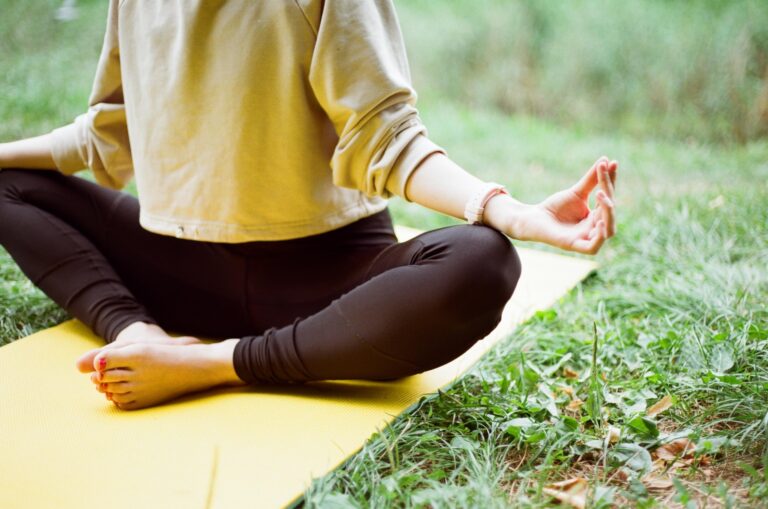About adaptive, inclusive, and accessible sports
Sport is a big part of life in Australia, and for good reason. It’s a great way to meet people and make friends, there are proven health benefits, and—whether you’re playing or following a team, in any league or skill level—it’s a great source of fun too.
In this article, we’ll cover some of the common questions and topics associated with adaptive, inclusive, and accessible sports. So, whether you’re ready to get in the game or just interested in what’s out there as an option, we’ve got you covered.
Why should I get involved? What are the benefits of participating in adaptive, accessible or inclusive sports?
It’s beneficial for your physical health, both short and long-term.
Whatever your age or ability, participating in regular exercise and physical activity is the best way to improve cardiovascular fitness (heart and lungs), muscle strength, flexibility, and overall physical wellbeing.
For kids, playing sports and exercising frequently from a young age can contribute to a huge range of long-term health benefits. This includes reduced risk of chronic conditions, improved development of muscles and bones, and even better sleep.
It has a positive impact on mental health and wellbeing.
There’s all sorts of research to prove that exercise makes you feel better mentally and emotionally. Participating in inclusive or adaptive sports can reduce anxiety, depression, and other negative feelings by improving confidence, supporting you to build new skills, and encouraging connection with other people.
Exercise has also been found to alleviate the experience of low self-esteem and social withdrawal. If you’re having a difficult day or week, getting involved with sport can also be a great way to let off some steam, as a positive outlet for stress, anxiety and frustration.
It’s a great way to connect with other people socially.
An accessible sports track, field, or court is a great place to meet people with similar interests and life experiences. Joining an accessible or adaptive sports team is a great way for people living with disabilities to connect with others who share similar interests, help develop a sense of friendship and belonging, and reduce feelings of loneliness or isolation.
It’s an opportunity to build new skills and enhance your independence.
Whichever sport or physical activity you choose, chances are you’ll develop a variety of useful skills along the way.
Many of the skills involved with sports are equally helpful for the techniques people with low vision or blindness learn through Orientation and Mobility training. By playing sports, you’ll improve your skills in effective communication, rapid problem-solving, goal-setting, resilience in the face of challenges, and other qualities that are equally beneficial in day-to-day life.
It’s fun!
At the end of the day, the main benefit of accessible and adaptive sports is that they’re fun! Whatever your ability, there’s fun to be found in sport: whether it’s shooting for goal—and scoring the matchwinner—or just shooting the breeze with friends before, during, and after. Check out some of the unique sports for people with disability below. Is there any specific one that appeals to you?
What kinds of adaptive sports are there?
There are all kinds of adaptive sports for people with different disabilities, skillsets, and preferences. Some of the most common adaptive sports you’ll find in Australia include:
1. Wheelchair basketball.
Wheelchair basketball is a fast-paced and dynamic team sport that has been adapted for people who use wheelchairs. It follows most of the rules of traditional basketball, with some slight variations to accommodate the unique abilities of players using wheelchairs.
2. Wheelchair rugby.
Also known as quad rugby—and sometimes jokingly referred to as ‘murderball’ by players and participants—wheelchair rugby is a full-contact team sport for people with mobility challenges in both their upper and lower limbs. It combines different elements of basketball, rugby and handball.
3. Adaptive athletics/track and field.
Adaptive track and field consists of a wide range of events suited to people with different abilities, skill levels and preferences. The track events include sprints, middle-distance and long-distance races, where athletes can compete in wheelchairs, on prosthetic limbs, or with other adaptive devices. People with partial vision or blindness will commonly compete with a guide runner, who supports the athlete by providing information about the course and maintaining a tether connection.
4. Goalball.
Goalball is a Paralympic sport designed specifically for people with partial vision or blindness. With three players on each team, the objective is to score points by throwing a ball with bells into the opponent’s goal. Goalball is played on an indoor court, about the same size as a volleyball court, with tactile markings to help players orient themselves. The ball is slightly bigger than a basketball and contains bells inside so that players can track its movement and location through sound.
5. Cycling.
In the Paralympic Games, there are many different cycling events adapted for people with a range of disabilities. Tandem cycling is common for people with blindness or partial vision. It involves two riders on a single bicycle, with one of the cyclists serving as the pilot, and the other as the stoker (usually the person with blindness or partial vision).
6. Wheelchair tennis.
Wheelchair tennis follows the same rules and structure as traditional tennis. The court, dimensions, and net height are all unchanged. Like traditional tennis, the sport is played at various levels: from social play to major professional tournaments, including the Australian Open and Wimbledon.
7. Sitting volleyball.
Sitting volleyball is a Paralympic sport. Designed for people with a range of disabilities—but particularly those who have difficulty moving or standing—it is a modified version of traditional volleyball, with a slightly smaller court and adjusted net height.
8. Blind cricket.
Blind cricket is a modified version of the traditional sport, specifically adjusted to support the requirements of people with partial vision or blindness. The ball contains bells to allow players to track its movement, and the stumps are typically slightly larger than those in traditional cricket. Bowlers in blind cricket deliver the ball underarm. They must also announce the type of delivery—whether fast, slow, or spin—before bowling to the person batting. The wicketkeeper often provides additional information to both the bowler and the person batting. Fielders use strings and tactile markers to recognise various field positions, and audio information from sighted guides standing around the field. Scoring and dismissals are the same as traditional cricket.
9. Swimming.
Like athletics and track and field, there are many swimming events and disciplines that can be modified for people with different disabilities and preferences. These include sprint events and long-distance events, in freestyle, backstroke, breaststroke, butterfly and medley events. People with partial vision or blindness can participate through adapted programs and assistive supports. These include guide swimmers (who accompany the person and provide verbal cues and physical guidance for the swimmer with partial vision), tactile aids like lane ropes with textures or temperature variations in the water, or auditory cues.
10. Sailing.
Adaptive sailing is a popular recreational and competitive activity for people with physical and cognitive disabilities alike. Using adaptive equipment and assistive technologies, sailing is a great way to enhance independence, confidence and a sense of freedom on the water.
11. Blind tennis.
Blind tennis is an adapted version of traditional tennis for people with partial vision or blindness. It uses a larger, foam ball containing bells to allow players to track its movement by sound. The court is smaller than a standard tennis court and has tactile lines. Players are classified into categories (B1 to B4) based on their level of visual impairment, with rules adjusted accordingly. For example, the number of allowed bounces varies from one to three depending on the player’s classification. The net is lower than in standard tennis. Blind tennis is growing in popularity in Australia, with increasing numbers of players participating at both recreational and competitive levels. Find out more about blind tennis here.
What is the difference between an adaptive and inclusive sport?
While people will sometimes use these two terms interchangeably, there are disability sports groups that suggest they are not the same. The distinction can be helpful in clarifying the types of sports you’re referring to or looking for.
An adaptive sport is one that has been modified to ensure people with disabilities can play and participate. This modification can relate to the way the game is played, the equipment that is standard or required to participate, or the rules of the sport. Adaptive sports programs are typically run as their own distinct leagues or competitions, separate from traditional sports programs. Wheelchair basketball is an example of an adaptive sport.
Inclusive sport refers to programs, leagues or competitions where people with disabilities participating alongside athletes who do not have disabilities. The rules or equipment are unchanged.
Does the NDIS provide funds for participation in adaptive sports?
While circumstances will change from person to person, the short answer is yes: the National Disability Insurance Scheme (NDIS) can provide funds to support people to participate in adaptive sports. Again, depending on your unique personal situation, the NDIS may be able to offer reasonable support for:
- Transport to and from activities.
- Specialised sporting equipment or necessary modification of equipment.
- Personal assistance to support participation in recreational activities.
- Assistance building the skills required to participate in sport and recreation.
Remember, the funding available via the NDIS will depend on your individual goals. For more information, get in contact with our team to arrange a friendly chat about how we can support your situation.
How can I participate in accessible, adaptive or inclusive sport?
There are many ways to get involved! If you’re hoping to learn more about sports for people with disabilities, these organisations may be able to provide more information:
- Blind sports organisations, such as Blind Sports Australia, play an important role in promoting and organising adaptive sport for people with partial vision or blindness. They can offer information and support you to find opportunities to participate in a range of sports. Find more information here.
- The Australian Paralympic Committee (APC) and state-based paralympic organisations provide support and can provide guidance on how to get involved. You can learn more about them here.
- You can also find state-specific organisations who will be able to provide information and opportunities for you to participate in accessible or adaptive sport. For example, in Victoria, Access All Abilities provides a connection service for people with a disability to sports and recreational opportunities. Find more information about them here.
Interested in more information?
We’re always here to help, and we’d love the opportunity to discuss your goals in further detail. Contact us today to arrange a friendly chat with no obligations. We can’t wait to hear from you!
Find out more
Ready to continue?
Seems like you have filled this form earlier. Let’s pick up where you left off.



